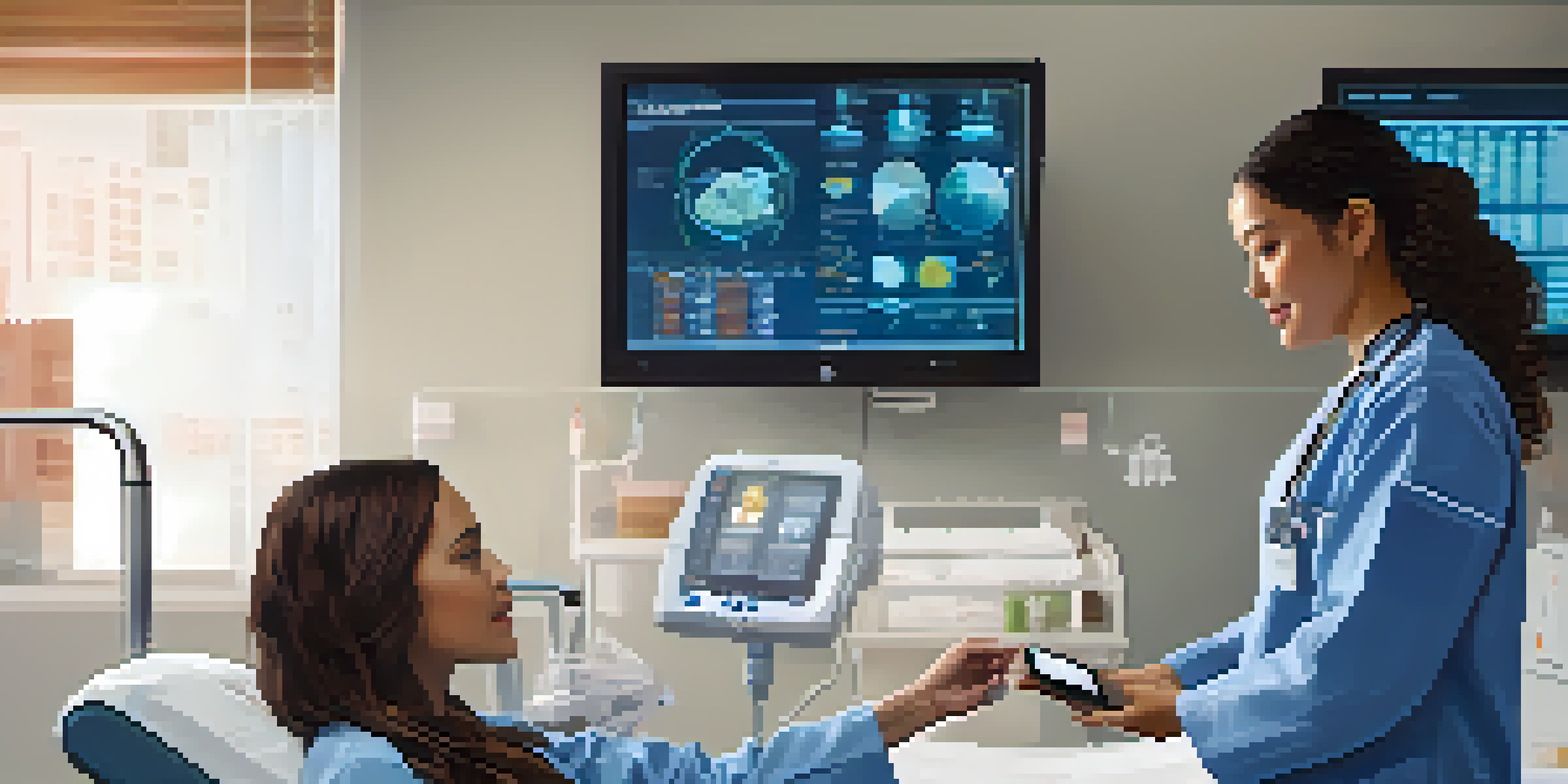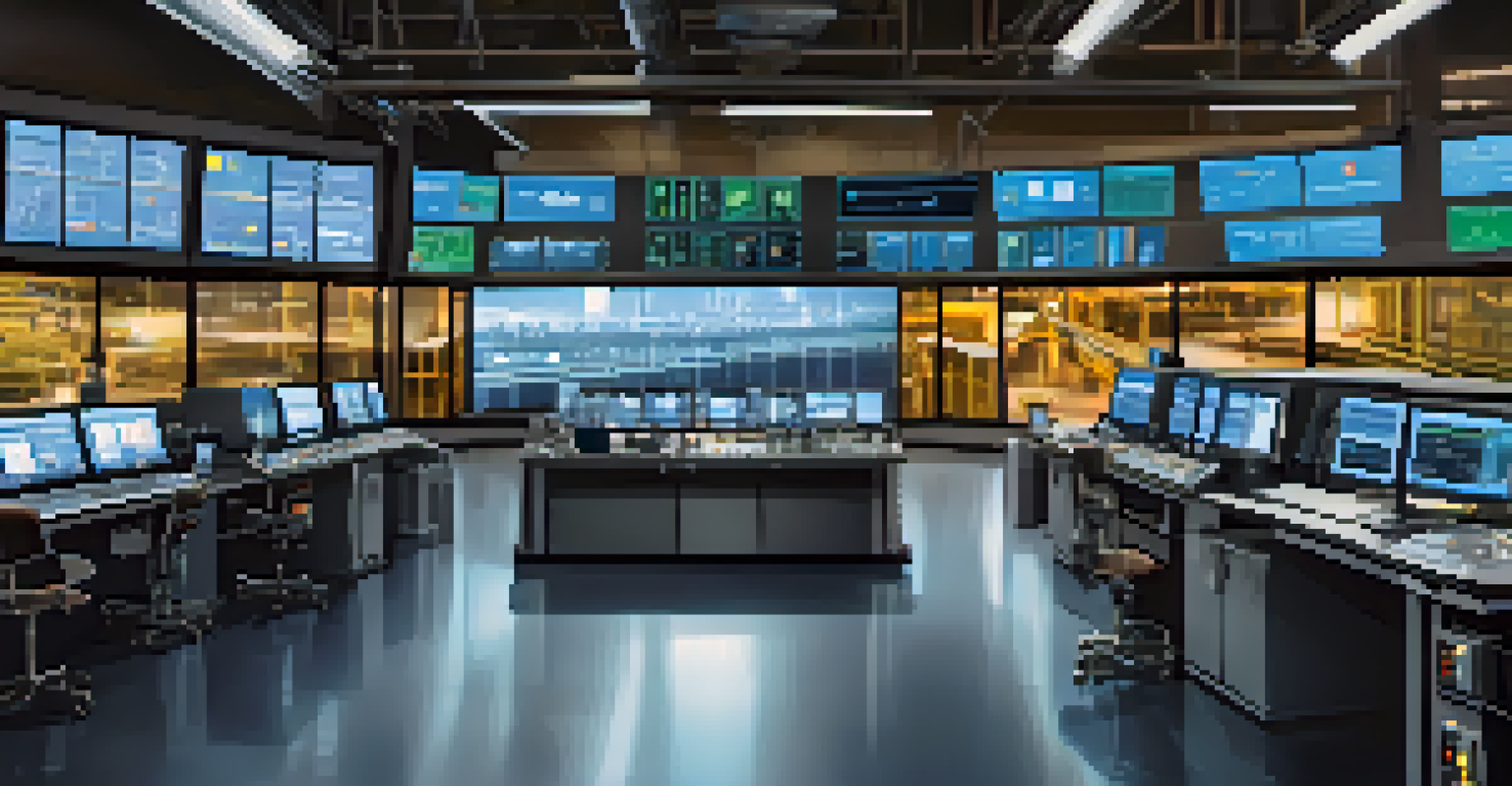Integrating Remote Monitoring with Existing Systems

Understanding Remote Monitoring: A Brief Overview
Remote monitoring refers to the use of technology to monitor a system or process from a distance. This can include anything from health monitoring devices to industrial equipment. By gathering data remotely, organizations can make informed decisions without being physically present, which can save time and resources.
The future is already here – it's just not very evenly distributed.
For example, a healthcare provider may use remote monitoring to track patients' vital signs in real-time, allowing for quicker responses to any issues. Similarly, businesses can monitor machinery performance to predict failures before they happen. This proactive approach enhances efficiency and safety.
As remote monitoring technology continues to evolve, it opens the door for integration with existing systems, making it essential for organizations to understand its capabilities and benefits. This sets the stage for a more connected and responsive operational environment.
The Importance of Integration in Remote Monitoring
Integrating remote monitoring with existing systems is crucial for maximizing its benefits. When these systems work together, they create a more holistic view of operations. This integration allows for real-time data analysis, which can lead to quicker decision-making and more streamlined processes.

Consider a manufacturing plant where machines are equipped with sensors for remote monitoring. If these sensors are integrated with the factory's management software, the data gathered can trigger alerts when maintenance is due, preventing costly downtime. The synergy created through integration enhances productivity and reduces operational risks.
Remote Monitoring Enhances Efficiency
Utilizing remote monitoring technology allows organizations to track systems in real-time, leading to improved decision-making and resource management.
Moreover, an integrated approach fosters collaboration among teams, as everyone has access to the same information. This transparency can lead to improved communication and teamwork, which are vital for organizational success.
Identifying Existing Systems for Integration
Before integrating remote monitoring, it's essential to identify the existing systems in place. This includes understanding their functionalities, data flow, and how they currently operate. By mapping out these systems, organizations can pinpoint areas where remote monitoring can add value.
In the age of information, ignorance is a choice.
For instance, if a company relies on a legacy inventory management system, it may benefit from remote monitoring to track stock levels in real-time. This would allow for automated restocking and prevent overstocking or stockouts. Understanding these systems is the first step toward effective integration.
Additionally, organizations should assess the compatibility of their current infrastructure with remote monitoring technologies. This involves evaluating hardware, software, and network capabilities to ensure a smooth transition.
Choosing the Right Remote Monitoring Solutions
Selecting the appropriate remote monitoring solution is vital for successful integration. Organizations should consider their specific needs, budget, and the scalability of the solution. Not all remote monitoring tools are created equal, so understanding what features are essential is key.
For example, a transportation company may need GPS tracking and fuel monitoring, while a healthcare facility might prioritize patient data security and compliance. By aligning the solution with organizational goals and industry requirements, businesses can optimize their remote monitoring efforts.
Integration Boosts Operational Insight
Integrating remote monitoring with existing systems provides a holistic view of operations, facilitating real-time data analysis and collaboration among teams.
Moreover, it's beneficial to choose solutions that offer integration capabilities with existing systems. This ensures a seamless connection, allowing for data sharing and enhancing overall operational efficiency.
Implementation Strategies for Seamless Integration
Once the right remote monitoring solution is chosen, the next step is to develop an implementation strategy. This should include defining clear objectives, key performance indicators (KPIs), and a timeline for integration. A structured approach minimizes disruptions and enhances the chances of success.
For instance, a phased implementation might be effective, beginning with a pilot program in one department before rolling it out company-wide. This allows for troubleshooting and adjustments based on initial feedback. Engaging employees in the process can also foster buy-in and ease the transition.
Training staff on how to use the new systems and interpret the data is equally important. Providing adequate support during this phase can help ensure that everyone is comfortable with the changes and can maximize the benefits of remote monitoring.
Monitoring Performance and Making Adjustments
After integrating remote monitoring with existing systems, organizations should continuously monitor performance to ensure everything is functioning as intended. This involves regularly reviewing data, assessing system reliability, and evaluating whether the integration is meeting the established objectives.
For example, if a factory's machinery is not providing expected data accuracy, adjustments may be necessary, whether that means recalibrating sensors or updating software. Continuous monitoring allows for early detection of issues, enabling timely interventions.
Future Innovations in Monitoring Tech
Advancements in AI and machine learning promise to enhance remote monitoring capabilities, enabling proactive decision-making and greater operational efficiency.
Additionally, organizations should remain open to feedback from users. This can provide valuable insights into potential improvements, ensuring that the integrated system evolves in line with changing needs and technology advancements.
The Future of Remote Monitoring Integration
As technology continues to advance, the future of remote monitoring integration looks promising. We can expect to see more sophisticated solutions that leverage artificial intelligence (AI) and machine learning to enhance data analysis and predictive capabilities. This could lead to even more proactive decision-making for organizations.
Imagine a scenario where integrated systems not only monitor performance but also predict failures before they occur, enabling preemptive action. This would not only save money but also improve safety and operational efficiency. The potential for innovation in this space is vast.

Moreover, as more businesses recognize the importance of data-driven strategies, the demand for seamless remote monitoring integration will continue to grow. Organizations that embrace these changes will likely find themselves at a competitive advantage in their respective industries.